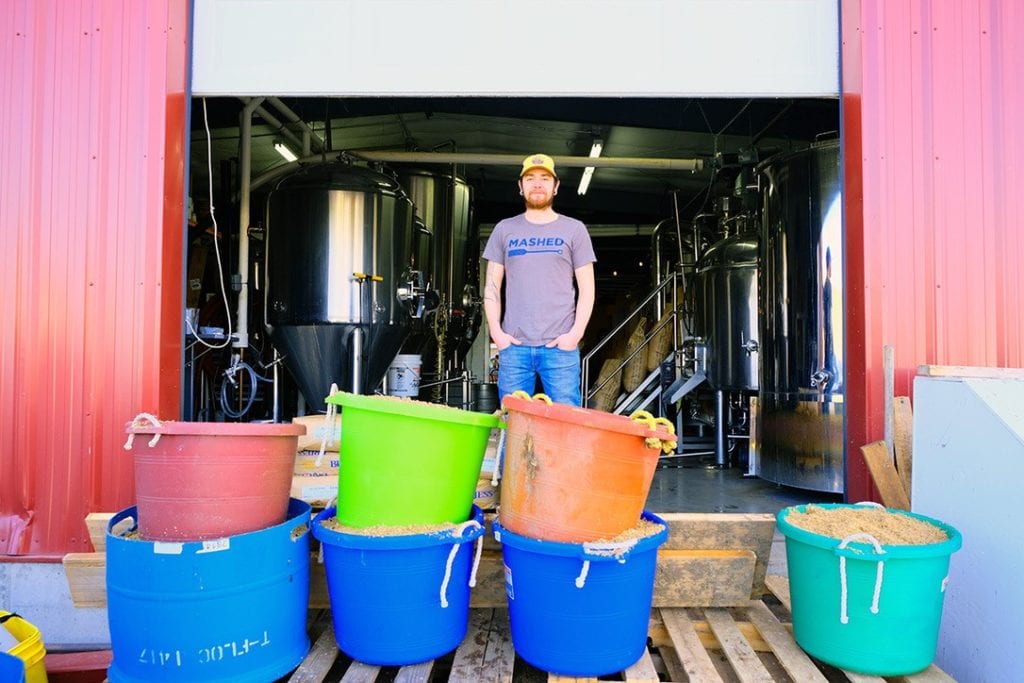About the photo: Mike Garrity, owner of Triple Dog Brewing, standing at his brewery on Jan. 24, 2020. | Credit Rachel Cramer / Yellowstone Public Radio
Waste produced by breweries—even small craft beer enterprises—can pose problems for sewer systems and water treatment plants.
Because it's rich in yeast, hops and sugar, brewery waste can throw off the microbes that wastewater treatment plants rely on to remove nitrogen and phosphorus, two nutrients that can cause algae blooms in rivers and kill off fish. Yet the Water Reclamation Facility in Havre, Montana has discovered that brewery waste—used correctly—can be beneficial to the process.
Using leftover barley has allowed the wastewater treatment plant to meet more stringent clean water standards—and save at least $16,000 per year.
In a collaborative effort, a local brewery provides its beer waste to feed the treatment plant's bacteria at just the right time in just the right dosage. Using leftover barley from making beer to feed the system’s microbes has allowed the wastewater treatment plant to meet new, more stringent clean water standards—and save at least $16,000 per year on chemicals which did the same thing. Those involved suggest their partnership is a model that could be replicated elsewhere. The Environmental Protection Agency noticed Havre's innovative approach and gave it an honorable mention in 2019.
Meeting the UN's Goals
Goal #6: Clean Water and Sanitation | Ensure availability and sustainable management of water and sanitation for all.
This is the fourth in a series of Stories of Hope for the Easter Season prepared by the Justice, Peace, and Integrity of Creation committee of the Dominican Sisters of Springfield (JPIC). Every story demonstrates a success in meeting one or more of the United Nations' Sustainable Development Goals (SDGs) and provides a glimpse into the world that is possible.
Watch for a new story each week throughout the Easter Season. Read all the stories as they appear here.


